
[ Open chords ] [ Root 5 bar chords ] [ Guitar chords ] [ Bar chords ] [ Chord inversions ]
Open position guitar chords
Open position guitar chords get their name from the root note of the chord.
For example, the root note for the open position E chord would be the Low E note. This E note would be the open Low E string or 6th string.
The root note for the open position A minor guitar chord would be the Low A note and would be the open A string or 5th string.
Look below at the guitar chords. Notice the (0’s) next to the strings. The (0’s) shown next to the strings will be strummed open or not touched or fretted. When playing the A minor chord strum from the open A string down through the rest of the strings. When you play the C major chord the G string and high E string will be left open and not fretting, look below.
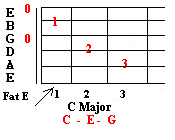
Once again, the A minor chord is made up of the A – C – E notes. Look at the images below. The first image shows the A minor chord with the fingers that play it and the second image shows the notes of the A minor chord. The open strings are the A, and high E. Once again these open strings are not fretted, but strummed along with the fretted notes. Also notice that the open strings are part of the A minor chord, the A string (A note) and the high E string (E note).
The 1 finger is on the first fret B string. The 2 finger is on the second fret D string and the 3 finger is on the G string second fret . Play this chord and try not to touch the strings that are left open.
Listen to the A minor guitar chord.
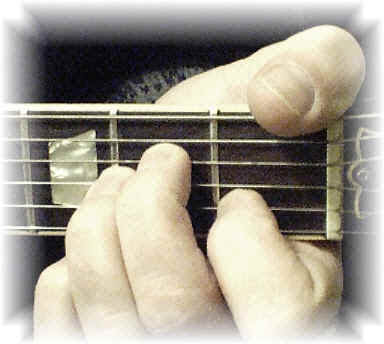
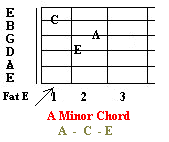
The C major chord has been illustrated below. Notice the fingering pattern and fingers you use to play the C chord. It may take you some time to get comfortable with this. Recall in our previous guitar lessons that we assigned each fretting finger a specific number. Look below and memorize what number corresponds to what finger you use. For example. Look at the C chord below and notice there is a 3 on the A string, 2 on the D string and and 1 on the B string. These are the fingers you use to play the C chord. The 0’s are left open, not fretted, but strummed along with fretted notes.
- Index
- middle
- ring
- pinkie
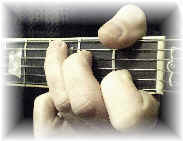

The G Chord is shown below. Once again, practice this chord until you have it memorized. Hold each note firmly, but try to stay relaxed. Listen to the G chord.

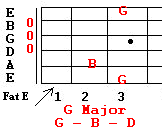
The D minor chord has been illustrated below. The first image shows the fingering pattern and the second image shows the notes of the D minor chord.. I personally use my 4 finger instead of the ring finger, but you can use your 3 finger.
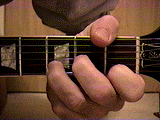
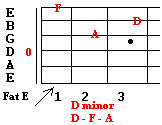
The E minor chord has been illustrated below. The first image shows the fingers that play it and the second image shows the notes that make that chord up. The notes that make up the E minor chord are E – B- G
The open strings are the E, G, B and E string. Those notes are left open and played because they make up the E minor chord. Listen
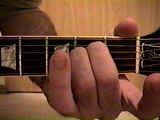
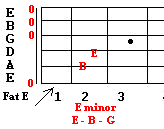
The F chord is illustrated below. The first image shows the F chord played with the thumb on the Low E string. The second image is barring the complete 1st fret with your one finger. This is the root 6, E type, Bar chord.
The Low E string determines what chord it will be. This is also a movable bar chord. You can move this fingering pattern all over the fretboard to play different chords. If you moved this fingering pattern to the 3rd fret, you would now be playing the G chord. If you moved this pattern to the 5th fret, it would be the A chord. If you moved it to the 7th fret, you would be playing the B chord, at the 8th fret it would be the C chord, 10th fret, D chord and so on. The note on the Low E string determines what guitar chord it would be when you use the movable bar chord. We will learn more about bar chords a little later on.
Listen to the F chord.
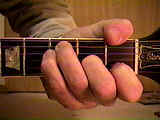
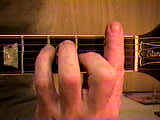
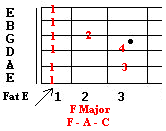
Notice how you can bar this chord. Your 1 finger covers the entire 1st fret from the 1st string to the 6th string. Move this fingering pattern around and play all major chords along the Low E string.
Notice how you can play the F major chord with your thumb on the Low E string. This is the same chord as played with the 1 finger on the 1st fret. You can substitute this fingering pattern for all chords along the E string.
Good Luck,
Guitar Secrets

